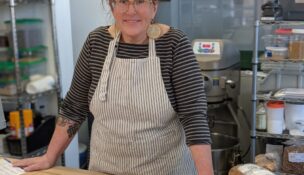The Pollinator District Adds New Meaning to 'Mixed Use'
Butterfly Pavilion is more than a fun place to watch butterflies and hold Rosie the tarantula
Nora Caley //September 23, 2019//


The Pollinator District Adds New Meaning to 'Mixed Use'
Butterfly Pavilion is more than a fun place to watch butterflies and hold Rosie the tarantula
Nora Caley //September 23, 2019//

Butterfly Pavilion is more than a fun place to watch butterflies and hold Rosie the tarantula. The invertebrate zoo is also helping to maintain biodiversity and secure the world’s food supply.
Butterfly Pavilion in Westminster and the Denver- and Loveland-based real estate developer McWHINNEY plan to build a “Pollinator District,” a plant-rich area that supports pollinators such as bees, butterflies, other beneficial insects, birds and small mammals. The Pollinator District will be located at Baseline, a new mixed-use community currently under development in Broomfield at I-25, E-470 and Baseline Road.
Landscaping at the Pollinator District will feature native shrubs and wildflowers to provide nutrition for pollinators. There will be habitat gardens with a variety of native flowering plants and shrubs that are xeric, or require very little water. Also, aspiring beekeepers in the community will have opportunities to learn how to keep bees through sustainable techniques.
It’s a comprehensive project that builds on earlier initiatives of Butterfly Pavilion, which in the past built pollinator habitats at senior communities and schools to engage residents and students. “It was a scattershot approach,” says Amy Yarger, horticulture director for Butterfly Pavilion. “We would take the opportunities as they came.”
The new project fits McWHINNEY’s principles of mindful stewardship and creating sustainable communities, says Kyle Harris, Baseline general manager. “There is a large body of research showing how these pollinator populations are decreasing,” he says. “They are foundational to our overall food supply. There is a need for action now.”

The Discovery Garden in late summer.
The Pollinator District will help differentiate the community and attract a certain audience. “Because of our environmental efforts, people are saying, ‘This is the place I want to be because I share these values,’” Harris says, adding that the Pollinator District is not the only draw. “There will be some people here because it’s next to a mobility hub, and some because it’s walkable and bikeable.” Homeowners will begin moving in in 2020, and they will have to follow guidelines related to what they plant, and restrictions on pesticides.
Pollinators play a critical role in the ecosystem. “One out of three bites of food you take relies on pollinators,” Yarger says. “For example, with chocolate, little flies called midges pollinate
a cacao flower.” Her team collected data at West Village, the area of Baseline where the Pollinator District will be built, to get the starting count of bees, butterflies and others. Future studies will indicate whether the populations are improving.
Also important will be whether the Pollinator District is financially feasible. While there are higher expenses at the outset related to planning, there will be savings later due to lower water usage and less lawn care expenses. “If this is crazy expensive it will not pass the economic sustainability test,” Harris says. “We don’t think that will be the case.”

























